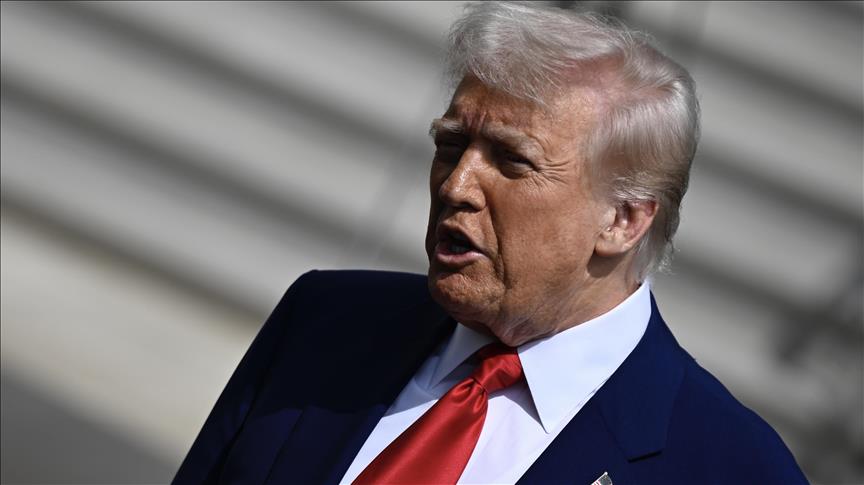Brent crude tumbled nearly $4, closing below $70 per barrel, after US President Donald Trump announced reciprocal tariffs, fueling concerns of a short-term downtrend in oil prices.
The US administration’s decision to impose at least a 10% tariff on imports from multiple trading partners has heightened fears of escalating global trade wars, potentially curbing oil demand. Market participants are also wary that these measures—and their broader ramifications—could weigh on not only oil prices but also global trade and financial markets.
Brent crude, which had surged 3% earlier in the week following Trump’s warnings to Russia and Iran, slipped 0.3% to $74.30 per barrel on April 1, just ahead of the tariff announcement. West Texas Intermediate (WTI) crude, which had ended March on a positive note, also edged down 0.3% to $70.93.
The sell-off deepened on April 2 as “tit-for-tat” tariff measures were unveiled, with Brent shedding 0.9% to settle at $73.64, while WTI declined 0.6% to $70.48.
By April 3, Brent crude had plunged 5.4%, closing at $69.63, after Trump’s April 2 tariff actions—dubbed “Liberation Day” by the president—intensified expectations of weaker global demand. WTI saw an even steeper decline, sinking 5.6% to $66.33.
Brent’s $4 drop marked its steepest daily decline since October 2023, underscoring mounting fears that trade tensions could stifle energy demand worldwide.
– Trump’s sweeping tariffs range from 10% to 50% on imports from multiple countries
Trump announced sweeping tariffs on April 2, ranging from 10% to 50% on imports from dozens of countries and economic regions, including South Africa.
Imports from South Africa will face a 30% surcharge, while other countries, including Türkiye, the UK, Brazil, Australia, the UAE, New Zealand, Egypt, and Saudi Arabia, will see a 10% reciprocal tariff.
The EU will face a 20% tariff, while other nations will be subject to reciprocal tariffs as follows: China 34%, Vietnam 46%, Taiwan 32%, Japan 24%, India 26%, South Korea 25%, Thailand 36%, Switzerland 31%, Indonesia 32%, Malaysia 24%, Cambodia 49%, Bangladesh 30%, and Israel 17%.
Trump also provided further details on the previously announced 25% tariffs on automobiles, set to take effect on April 4. Additionally, on March 24, the US president announced a 25% tariff on nations purchasing oil or gas from Venezuela, effective April 2.
Experts warn that these measures could escalate into a full-fledged global trade war, potentially triggering an economic slowdown and weighing on oil demand.
– Bearish sentiment expected in near term
Trump’s tariff announcements have sent shockwaves through global trade, even though markets had partially priced in the move, Gaurav Sharma, a London-based independent oil market analyst, told Anadolu.
However, Sharma believes the decline is unlikely to be sustained. “There is still plenty of crude oil—especially light sweet crude oil—available, and OPEC+ is raising production too. That being said, I don’t see anything but bearish sentiment in the near term,” he noted
Sharma also highlighted the possibility of retaliatory tariffs from other nations in response to Trump’s actions and warned that rising inflation could play a critical role in shaping oil prices.
“Investors should pay keen attention to the direction of the dollar and inflation in G20 markets,” he advised.
– Mutual tariffs could escalate into ‘trade wars’
Osama Rizvi, energy and economy analyst at US-based market intelligence firm Primary Vision, warned that oil prices could dip below $60 due to low demand expectations and OPEC+’s plans to boost production.
Rizvi highlighted that, in addition to the tariffs announced by the US administration, the OPEC+ decision to end its voluntary production cut of 2.2 million barrels per day (bpd) as of April 1, coupled with a planned increase of 411,000 bpd in May, has further pressured oil prices.
He also noted that mutual tariffs could escalate into ‘trade wars,’ exerting long-term pressure on the global economic recovery, with consumers facing higher prices for everyday goods.
‘In the US especially, the average household is set to lose around $2,000 in disposable income. Global central banks will now need to reassess their strategies, as another inflationary shock could hinder progress made in combating rising prices,’ he concluded.

